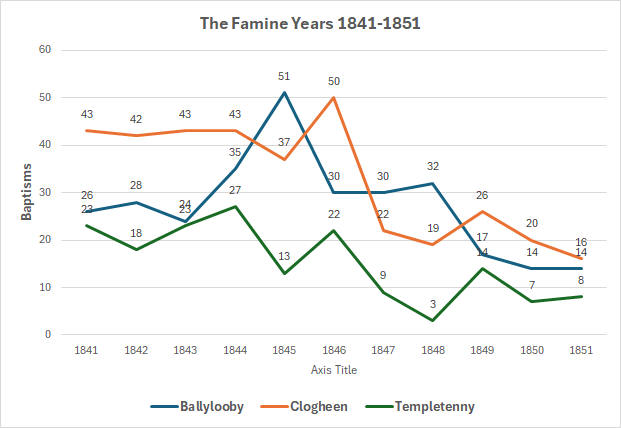
The Baptism and Marriage Registers of Clogheen, Templetenny, and Ballylooby
Parishes
- Tracing Eight Family Names -
Sullivan, Lonergan, Haly, Hogan, O'Donnell, Coughlin, Mulcahy, and Spotwood
Thanks to the National library of Ireland NLI, an important resource for tracing family ancestry has been made available to the general public. These images may be the only means for finding your ancestors as civil birth, marriage and death records were not mandated until 1864. Using the records to trace the above family names that are important in my ancestry I found that while documenting the spouses and children I opened my list exponentially creating a valuable search engine. The links below will allow you not only to search the baptismal and marriage tables but to download them as well. By downloading manipulating and sorting the file, specific data becomes available for each family name.
This work was a careful effort to record the names as accurately as possible creating a database that produces maximum results. Note that the cells that are shaded in gray are due to the parish record either missing or illegible and the page reference is provided for purpose of double checking all the results.
Updates:
Ballylooby Baptisms Completed August 12, 2025
Clogheen Baptisms Completed May 25, 2023
Templetenny Baptisms Completed March 25, 2025
Ballylooby Marriages Completed August 21, 2025
Updates: 3 September 2025

Left: This graph follows the baptisms of eight family names
in the three southern parishes from the census of 1841 through the
census of 1851. Note the last half of the 1840's were
considered to be the worst years of the famine and there are no
accurate records of deaths available. Because no civil records
are available before 1864, the baptismal registers the only
available records are for baptism and marriages. To be clear,
this is a hypothesis limited to Catholics births and marriages and
does not include the Church of Ireland or Anglican records and it is
also limited to the eight family names above. However, it does
reflect on what is occurring on a wider scale throughout the
parishes of southern Tipperary especially the peaks that occurred in
1844 and 1845 and the collapse that took place in subsequent years
due to famine and emigration.